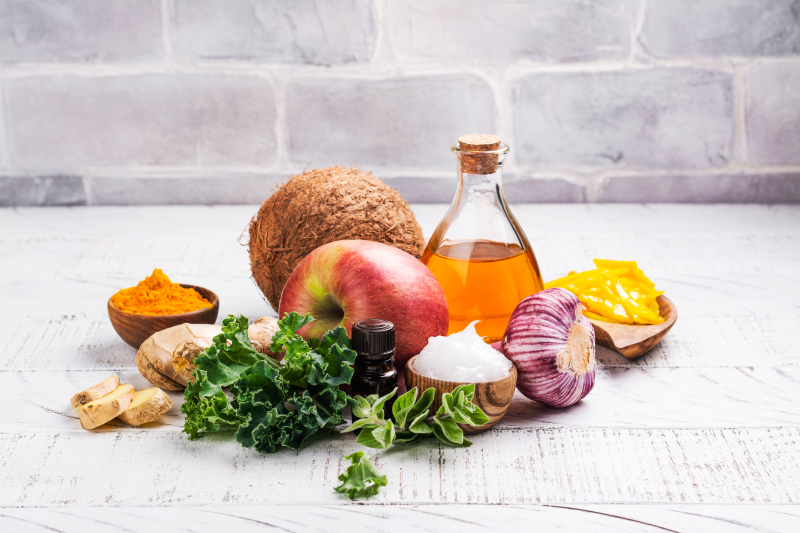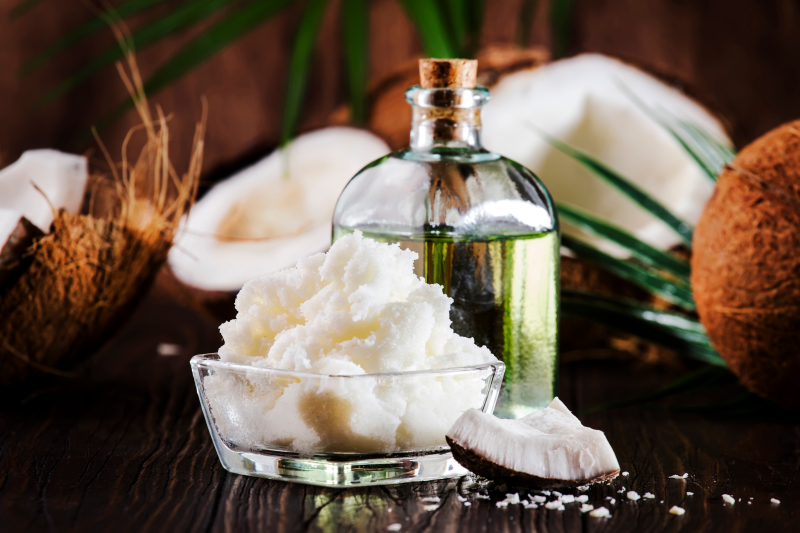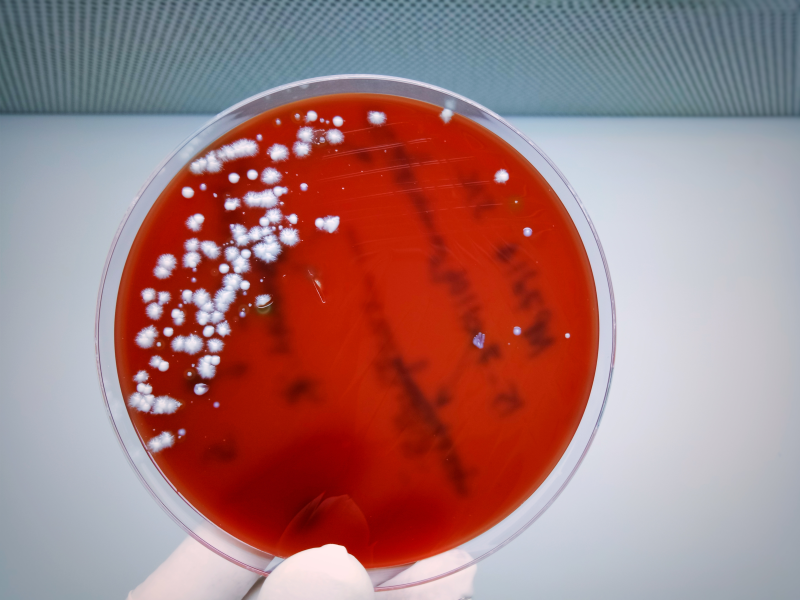While Candida is a naturally occurring yeast in the body, several factors can cause it to proliferate and grow out of control. This can lead to various health issues, including digestive problems, weight gain, skin irritations, and oral infections.
Discover the symptoms and causes of yeast infections and learn about the strongest Candida killer.
What is Candida?
Candida is a genus of yeast that falls under the broader category of fungi. It includes many species that naturally live in the human body but can turn pathogenic under certain conditions.
Yeasts such as Candida can become problematic when disruptions in the body’s natural environment, such as changes in pH, an imbalanced microbiome, or weakened immune responses, allow it to grow disproportionately.
There are over 150 different strains of Candida, some more infectious than others. One of the most common strains is Candida albicans, which is responsible for most yeast infections in humans.
Excessive Candida growth in the digestive tract is generally called Candida overgrowth. Oral thrush refers to fungal infection in the mouth, and a vaginal yeast infection is characterized by Candida overgrowth in the female reproductive system.
Other strains of Candida, such as Candida glabrata and Candida auris, can cause infections affecting the bloodstream. This can lead to invasive candidiasis, which may impact organ functions and lead to critical health complications.
Candida auris is a particularly concerning strain due to its resistance to prescription antifungal treatments and its tendency to cause outbreaks in healthcare facilities.
Research published in Microorganisms highlights the potential seriousness of these infections, stating, “This microorganism causes severe invasive infections with high mortality rates worldwide, particularly among hospitalized and immunocompromised patients.”
Watch the video below to discover the most powerful Candida killer.
The Most Powerful Candida Infection (Yeast Infection) Killer
Symptoms of Candida overgrowth
Symptoms of Candida yeast overgrowth can vary depending on the exact strain, severity, and location of the infection.
Common symptoms of Candida overgrowth include:
- Carbohydrate and sugar cravings
- Fatigue
- Bloating and indigestion
- Itchiness
- Velvety white coating on the tongue that can be painful
- Loss of taste or unpleasant taste in the mouth
- Cracking at the corners of the mouth.
- Abnormal vaginal discharge
Other symptoms may include a yeast or ammonia-like body odor, chronic sinus infections, diaper rash, constipation, diarrhea, nail fungal infections, skin rashes, and joint pain.
Candida infections can also trigger poor brain function, including confusion, poor memory, or difficulty concentrating.
In addition, Candida yeast cells compete for nutrients in the body, which can result in malabsorption and nutrient deficiencies. Common deficiencies associated with Candida overgrowth include vitamins A and B6, essential fatty acids, iron, and magnesium.
These nutritional deficiencies can trigger a range of additional symptoms, such as brain fog, weakened immune function, and neurological issues.

Causes of Candida overgrowth
One of the leading causes of Candida overgrowth is the widespread use of antibiotics. These prescription drugs are non-discriminatory, eliminating both the bad and the beneficial bacteria residing in the body.
Beneficial bacteria play a crucial role in preventing the spread of Candida, which explains why the use of antibiotics can quickly trigger a yeast infection.
Evidence published in Environmental Pollution found that even dietary exposure to antibiotic residues can increase the risk of Candida overgrowth.
The researchers concluded that “Crops are capable of taking up different types of antibiotics when exposed to antibiotic-contaminated wastewater or animal manure in soils.”
This means that even if you avoid eating animal products treated with antibiotics, you may still be exposed if you consume produce that has come into contact with manure, which is a commonly used crop fertilizer.
Candida overgrowth can also be triggered by several factors that impact the body’s microbial balance.
Here are common triggers of Candida infections.
1. Compromised immunity
Individuals with a weakened immune system, such as those with autoimmune disorders, and people undergoing chemotherapy or taking steroids are more susceptible to Candida overgrowth.
2. Diet high in sugars and refined carbohydrates
Candida yeast utilizes sugars and carbs as its primary fuel source.
A diet high in sweetened and processed foods, grains as well as sugary drinks provides an abundant substrate for Candida proliferation and significantly increases the risk of yeast infections.
3. Hormonal imbalance
Changes in hormone levels due to pregnancy, birth control pills, or hormone replacement therapy can also promote yeast growth.
Hormonal balance plays a crucial role in maintaining a diverse gut microflora, and fluctuating hormone levels can quickly favor the growth of Candida.

The most effective Candida killer
The most effective strategy for preventing, controlling, and eliminating Candida is to remove its primary fuel source.
Candida thrives on sugar and refined carbohydrates, and a low-carb diet is one of the most effective strategies for managing a Candida infection.
If you suffer from persistent yeast infections, it’s recommended to adopt a nutritious low-carb diet such as Healthy Keto®.
This diet plan eliminates sugar and refined carbs while prioritizing nutrient-dense foods such as non-GMO produce, grass-fed and pasture-raised meat, and organic dairy.
Not only can Healthy Keto help mitigate Candida growth by removing sugar, but it may also promote a balanced gut environment that is less favorable for Candida proliferation.
If you’re experiencing Candida overgrowth, you likely have an elevated pH level, which creates an ideal environment for yeast to flourish.
The ketogenic diet facilitates a metabolic shift from utilizing glucose to generate energy to using ketones as a primary fuel source. Ketones are organic acids that help lower the body’s pH, potentially discouraging Candida overgrowth.
In addition to adopting an anti-Candida diet such as Healthy Keto, intermittent fasting is another powerful tool to help combat Candida.
Fasting triggers autophagy, a cellular repair and renewal process that stimulates the elimination of pathogenic microbes such as Candida.

More ways to get rid of Candida
Making the right dietary choices plays a fundamental role in getting rid of Candida. However, there are several natural remedies that can also help prevent and eliminate yeast infections.
Here are five other natural ways to help get rid of Candida.
1. Oil of oregano
Wild oregano leaf extract has potent natural antimicrobial properties, making it a powerful tool against Candida.
“Oregano oil is a known antifungal, antibacterial, antiviral, antiparasitic, and anti-Candida agent that kills pathogenic microbes without affecting beneficial bacteria,” explains Dr. Berg.
2. Vitamin D3
Vitamin D is essential for immune function and has been shown to possess antifungal properties.
A study published in Microbiological Research revealed that vitamin D3 inhibits the growth of several Candida species, highlighting its ability to hinder biofilm formation.
Biofilms are communities of microorganisms that adhere together, creating a protective extracellular matrix. This matrix enables the organisms to stick to surfaces, evade the host’s immune response, and resist antifungal treatments.
By disrupting biofilm formation, vitamin D3 can inhibit fungal spread and enhance the effectiveness of antifungal treatments.
Recommendations for how much vitamin D you should take vary significantly among experts due to differences in measurement standards and individual health needs.
However, according to research published in Dermato Endocrinology, vitamin D3 supplementation has been found safe and effective at doses up to 15,000 IUs per day.

3. Medium-chain triglyceride oil
Medium-chain triglyceride (MCT) oil is a rich source of caprylic acid, a fatty acid with powerful antifungal effects.
Research published in Phytochemistry Reviews tested MCT oil in a group of premature infants with Candida infections. The researchers reported an 84 percent reduction in Candida colonies after only one week of treatment.
It’s recommended that you take one teaspoon of MCT oil daily, eventually increasing the dosage to one tablespoon, to help combat Candida.
4. Garlic
Incorporating garlic into your diet can help boost the body’s defenses against Candida overgrowth due to its high concentrations of allicin and ajoene.
Allicin and ajoene work by disrupting the cell membranes of microorganisms, making them more permeable and vulnerable to antimicrobial agents.
Research published in The Saudi Dental Journal revealed that allicin effectively inhibits the growth of Candida albicans and bacterial microbes such as Staphylococcus aureus.
By destroying microbial biofilms, allicin and ajoene can help control the growth of Candida and lower the risk of yeast becoming resistant to antifungal treatments.
5. Apple cider vinegar
Apple cider vinegar contains acetic acid, an organic acid that helps create an inhospitable environment for Candida, which can help prevent fungal growth.
Drinking diluted apple cider vinegar or incorporating it into salad dressing can help support your body’s natural defenses against Candida overgrowth.
While apple cider vinegar and other natural remedies can help manage Candida, it’s crucial to consult a medical professional if you experience persistent or recurring fungal infections.
If left untreated, yeast infections can affect organs and may trigger serious health complications.

Key takeaways
Candida is a naturally occurring yeast that can cause various health issues, such as fatigue, skin irritations, and infections if its growth isn’t regulated or controlled.
The strongest Candida killer is a low-carb ketogenic diet. Limiting carbs and sugars removes Candidas’ primary fuel source, which helps prevent and manage yeast infections.
Other natural remedies for Candida overgrowth include intermittent fasting, vitamin D3, garlic, and oregano essential oil.
FAQ
1. What kills Candida fast?
Adopting a low-carb diet, such as Healthy Keto®, in conjunction with intermittent fasting can help quickly correct Candida overgrowth by limiting sugar and carbohydrates, which are yeast’s primary fuel sources.
2. Is Candida harmful?
Candida is a naturally occurring yeast in the body and isn’t inherently harmful. However, if allowed to proliferate, it can cause various health issues, including digestive problems, oral thrush and vaginal yeast infections.
3. What is the main cause of Candida?
The leading causes of Candida overgrowth are antibiotic use and a diet high in sugars and carbohydrates.
Yeast requires sugars to proliferate, and a high-carb diet allows Candida to thrive. This also explains why those consuming highly processed foods and grains are at higher risk of yeast infections than those following a nutritious low-carb diet.
4. What is the best diet to get rid of Candida?
The strongest Candida killers are intermittent fasting and a ketogenic anti-Candida diet characterized by the exclusion of sugar, grains, gluten, high-lactose dairy, and alcohol.
5. Does intermittent fasting help get rid of Candida?
Yes, intermittent fasting can help eliminate Candida overgrowth when combined with a low-carb anti-Candida diet.
Fasting induces autophagy, which is a cellular repair mechanism that helps destroy and eliminate pathogenic microbes such as Candida.
Sources
- https://www.mdpi.com/2076-2607/12/5/927
- https://www.sciencedirect.com/science/article/abs/pii/S0269749117300763
- https://www.sciencedirect.com/science/article/pii/S0944501322002403‘
- https://www.ncbi.nlm.nih.gov/pmc/articles/PMC5402701/
- https://link.springer.com/article/10.1007/s11101-024-09969-1
- https://www.ncbi.nlm.nih.gov/pmc/articles/PMC7848799/








